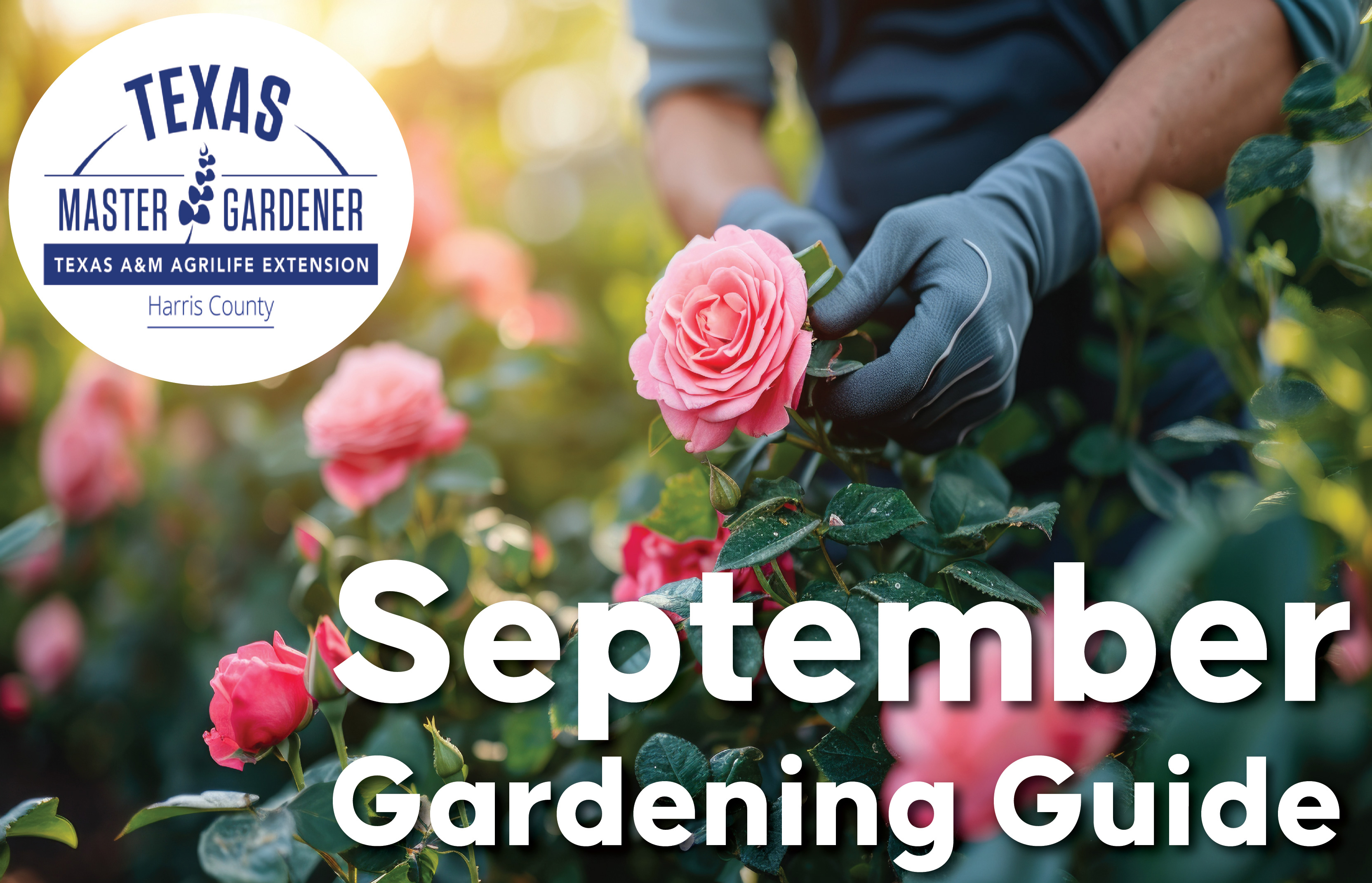
Green Thumbs Up: Harris County Master Gardener Shares Secrets for Thriving Gardens in September
This information has been generously provided to Harris County residents free of charge by the Harris County Master Gardeners, an expert group of trained volunteers assisting Texas A&M AgriLife Extension Service in educating the community using research-based horticultural information.
Did you know that the Harris County Master Gardeners offer free training, events and other resources all year round? To learn more, visit hcmga.tamu.edu.
By Karen Shook, Harris County Master Gardener
“Forget not that the earth delights in your bare feet and the winds want to play with your hair.” Kahlil Gibran (1883-1931)
Both history and forecasts indicate the worst of summer heat is behind us. (Hopefully not just wishful thinking on my part.) It will be wonderful to spend more time “bare footed” in my garden.
Remember the mantra, check for “too wet, too dry, just right” and water accordingly. Remember a good, deep watering is better than frequent, light watering.
Perennials and Ornamental Grasses
- Celebrate fall by planting chrysanthemums for fall color. Fertilize every 2 - 3 weeks until flower buds appear, then once a week until buds show color.
- You can also plant perennials, ornamental grasses, groundcovers, and vines. Prep the soil first! Fertilize the new plants. Established plants can be fertilized in September, then pause until February.
- Some spring flowering perennials can be divided (daylilies, calla lilies and irises). Others should wait until it is a bit cooler (Shasta daisy, gaillardia, cannas).
Annuals
- Start seeds for cool season like snapdragons, stock, calendula, alyssum. They will typically be ready for transplant in 6 to 8 weeks. You can start the hardening process once two sets of leaves appear.
- Pansies can be planted now for color into spring.
Bulbs
- Roses (other than once blooming) that were not pruned in late August, should be pruned in early September. Reduce size by 1/3 (or to desired height) making cuts just above a bud. Remove dead wood, diseased canes, twiggy growth. Fertilize and water after pruning. Continue regular fungicide spray schedule.
Shrubs
- Check soil acidity. Many plants prefer slightly acidic soil and Harris County tends toward alkaline. Acidify as needed especially for acid loving azaleas and camellias.
- Red tip photinias sheared early in the month should give a nice show with colorful new growth in cooler weather.
- Prepare beds for planting shrubs in October.
- Mid-to-early fall is a good time to take semi hardwood cuttings for plants you want to save in case of severe winter weather or plants you just want to share.
Planning Ahead for FallDid you know that dry, fallen leaves can have a new purpose as compost?
Get expert perspectives from Texas A&M AgriLife Extension on how to start
a compost bin, what you can put in it, and how compost can help your
garden thrive using material that might have otherwise gone in the trash!
|
Natives
- Plant bluebonnet, Indian paintbrush seeds in early fall. Scarified bluebonnet seeds germinate more quickly. Rake them gently into the ground.
Lawns
- Small areas of dead grass can be filled in with sod or planted with plugs. Loosen the soil prior to planting.
- Winterize in September or first week of October.
Edibles (vegetables, herbs, berries, fruits)
- It is time to plant most cool weather vegetables (after weather cools a bit, but not so late in September that we have a freeze before veggies are ready to harvest). Check your seed packet to estimate timing.
- It is a good time to plant strawberries if you can find them. Fertilize the soil prior to planting.
- See the following link for recommended planting times: Harris County Vegetable Planting Guide
Trees
- Light pruning of lower branches and some inner branches may be needed to let the sun through to lawns and plants below the trees.
- September is often an active month in hurricane season. Make sure you don't have any dead branches waiting to fall.
Want to go deeper? Visit the Harris County Master Gardeners' Urban Dirt Index for a plethora of information about gardening in your region at hcmga.tamu.edu/urban-dirt-index. Submit your horticulture questions to the Harris County Master Gardeners at hcmga.tamu.edu/ask-a-question.
Source: Harris County Master Gardeners






